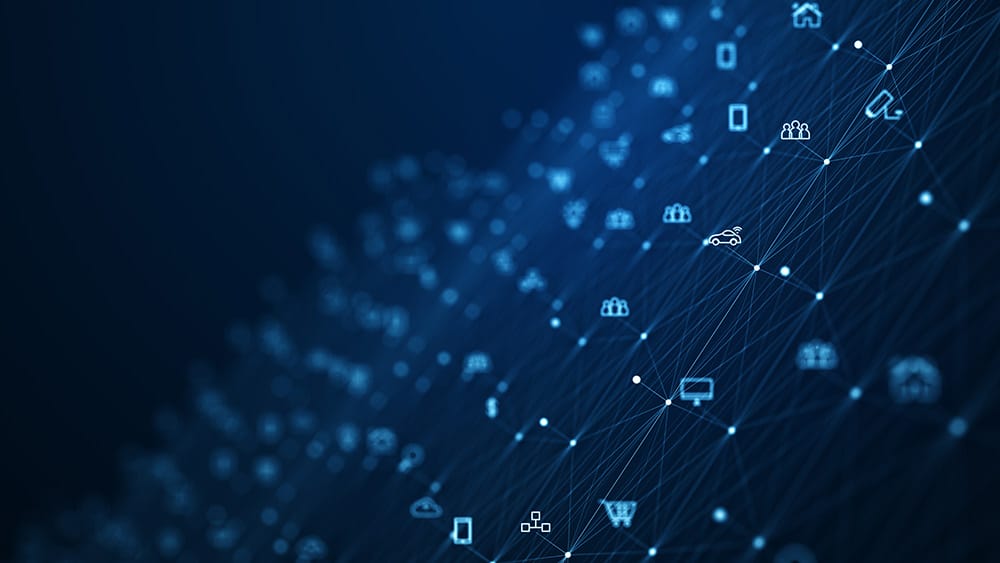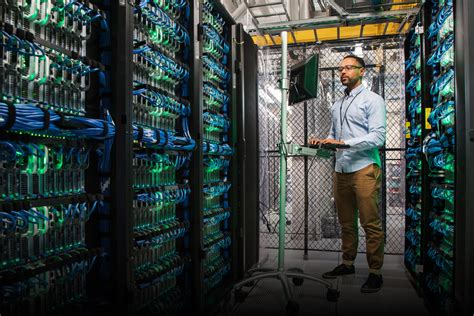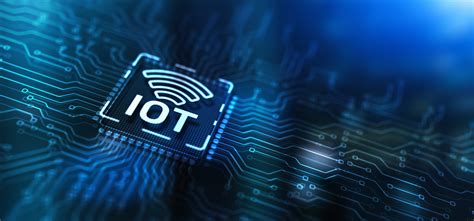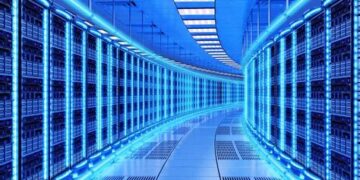In the rapidly expanding digital universe, the Internet of Things (IoT) stands as a monumental force, connecting billions of devices, from smart home appliances to industrial sensors, into an intricate web of data. This unprecedented scale of connectivity and data generation demands a robust, efficient, and highly adaptable computing infrastructure. Enter micro-servers, a transformative technology emerging as the backbone powering the explosive growth of IoT. These compact, low-power, and often specialized computing units are uniquely positioned to handle the distributed, real-time processing needs of IoT at the “edge,” fundamentally reshaping how data is collected, analyzed, and acted upon. For businesses and technology enthusiasts keen on optimizing network performance, enhancing data security, and maximizing the efficiency of their IoT deployments—factors crucial for driving digital engagement and, for content creators, securing high Google AdSense revenue through relevant and authoritative information—understanding the pivotal role of micro-servers is essential. This comprehensive article will delve into the core concept of micro-servers, dissect their critical advantages for IoT, explore their diverse applications, and illuminate the future landscape they are shaping in the era of pervasive connectivity.
The IoT Data Deluge: Why Traditional Servers Fall Short
The sheer volume, velocity, and variety of data generated by IoT devices present unprecedented challenges for traditional centralized cloud computing models. Imagine a smart city with millions of sensors monitoring traffic, air quality, public safety, and infrastructure. If every byte of data from these sensors had to travel back to a distant central data center for processing, several critical issues would arise:
A. Latency: The time delay in sending data to the cloud, processing it, and sending commands back can be unacceptable for real-time applications like autonomous vehicles, industrial automation, or emergency response systems. Milliseconds matter. B. Bandwidth Congestion: Transmitting massive volumes of raw data from countless edge devices over networks can quickly overwhelm available bandwidth, leading to bottlenecks, increased costs, and unreliable performance. C. Security Vulnerabilities: Sending all sensitive IoT data to a centralized cloud increases the attack surface. Data in transit is always more vulnerable, and a single breach of a central server can compromise vast amounts of information. D. Cost Inefficiency: Storing and processing every raw data point in the cloud, regardless of its immediate relevance, incurs substantial storage and computing costs. Much of the raw IoT data may be redundant, irrelevant, or only useful after initial filtering. E. Reliability and Offline Capability: IoT devices often operate in remote locations or environments with intermittent network connectivity. Relying solely on cloud processing means critical operations can fail if the connection is lost. Edge processing allows devices to function autonomously.
These limitations underscore the necessity for a distributed computing model that brings processing power closer to the data source—a need perfectly addressed by the rise of micro-servers.
What Are Micro-Servers? A Deep Dive into Edge Computing’s Workhorses
Micro-servers are compact, often low-power, and highly energy-efficient computing systems designed for specific, localized processing tasks. Unlike traditional enterprise servers that are built for maximum compute power and large-scale data center operations, micro-servers prioritize efficiency, minimal footprint, and distributed capabilities. They represent a fundamental shift in computing architecture, moving processing capabilities from a centralized cloud to the “edge” of the network—closer to where data is generated and consumed.
Key characteristics that define micro-servers include:
A. Compact Form Factor: They are significantly smaller than traditional servers, allowing them to be deployed in confined spaces, at remote locations, or even integrated directly into IoT devices or gateways. B. Low Power Consumption: Designed to operate with minimal energy, making them ideal for deployments where power resources are limited or where energy efficiency is a critical concern (e.g., battery-powered applications, green data centers). C. Specialized Processors: Often utilize System-on-a-Chip (SoC) architectures or ARM-based processors known for their energy efficiency, rather than high-performance x86 architectures found in traditional servers. However, more powerful x86-based micro-servers are also emerging for more demanding edge analytics. D. Modular and Scalable: Can be deployed in clusters, allowing for flexible scaling of computing power as IoT demands grow. Their modularity simplifies installation and maintenance. E. Decentralized Operation: Designed to operate autonomously or semi-autonomously at the network edge, performing local processing, filtering, and analysis before sending aggregated or critical data to the cloud. F. Cost-Effectiveness: Generally less expensive to purchase, operate (due to lower power consumption), and cool compared to traditional server infrastructure.
The emergence of micro-servers is intrinsically linked to the broader concept of edge computing, which pushes application and data processing capabilities away from centralized nodes and towards the logical extremes of a network.
The Unrivaled Advantages of Micro-Servers for IoT Growth
The adoption of micro-servers offers a multitude of benefits that are directly addressing the inherent challenges and accelerating the potential of IoT deployments across industries.
A. Reduced Latency and Real-Time Processing
This is perhaps the most significant advantage. By performing data processing directly at the source (the edge), micro-servers dramatically cut down the time it takes for data to travel to a central server and for commands to return.
- Autonomous Systems: Essential for applications requiring instantaneous responses, such as industrial control systems (e.g., robotics in manufacturing), self-driving vehicles (processing sensor data for immediate decision-making), and critical infrastructure monitoring (e.g., power grid management).
- Faster User Experiences: In smart retail or smart building applications, immediate data processing translates to quicker responses for interactive displays or personalized services.
- Proactive Issue Resolution: Real-time analysis of sensor data can identify anomalies or potential failures instantly, allowing for proactive maintenance or immediate corrective actions, preventing costly downtime.
B. Optimized Bandwidth Utilization
Instead of transmitting vast amounts of raw, unfiltered data to the cloud, micro-servers can pre-process, filter, and aggregate data at the edge.
- Data Filtering: Removing redundant, irrelevant, or normal data, sending only critical alerts or summarized information to the cloud. For example, a security camera might only send footage when motion is detected, not constant video streams.
- Local Storage and Caching: Temporarily storing data locally before batch upload or for quick retrieval by edge applications, reducing continuous network load.
- Reduced Data Transfer Costs: Less data sent over the network directly translates to lower bandwidth costs, especially critical for deployments relying on cellular or satellite connectivity.
C. Enhanced Security and Data Privacy
Distributing data processing enhances security by compartmentalizing potential attack surfaces and keeping sensitive data local.
- Decentralized Attack Surface: A breach at one edge device or micro-server doesn’t necessarily compromise the entire network, unlike a single point of failure in a centralized cloud.
- Data Minimization: Only aggregated or anonymized data might be sent to the cloud, protecting sensitive raw information at its source, which is crucial for GDPR and other data privacy regulations.
- Local Authentication and Authorization: Edge devices can perform initial authentication and authorization locally, reducing reliance on constant cloud connectivity for security checks.
- Reduced In-Transit Exposure: Less data traveling across public networks means fewer opportunities for interception or tampering.
D. Increased Reliability and Offline Operation
Micro-servers enable IoT systems to function even when connectivity to the central cloud is intermittent or completely lost.
- Autonomous Edge Operations: Critical functions can continue locally, ensuring continuity of service in remote locations (e.g., offshore oil rigs, smart farms) or during network outages.
- Graceful Degradation: Systems can maintain core functionality even if advanced cloud-based analytics are temporarily unavailable, preventing total system failure.
- Resilience in Harsh Environments: Designed to operate in diverse, sometimes challenging, environments where traditional data centers are impractical.
E. Cost Efficiency and Scalability
The distributed nature and lower resource demands of micro-servers translate into significant cost savings and flexible scalability.
- Lower Hardware Costs: Micro-servers themselves are typically less expensive per unit than powerful enterprise servers.
- Reduced Operational Costs: Lower power consumption means lower electricity bills and reduced cooling requirements.
- Modular Deployment: Easily scale computing power by adding more micro-servers as needed, without over-provisioning expensive central infrastructure.
- Lower Network Infrastructure Costs: Less reliance on high-bandwidth, low-latency network connections for all data transfer.
Diverse Applications: Where Micro-Servers Are Transforming IoT

The versatility and efficiency of micro-servers mean they are finding applications across an ever-growing spectrum of industries, fundamentally transforming operations and enabling new capabilities.
A. Industrial IoT (IIoT) and Manufacturing
In smart factories and industrial environments, micro-servers are crucial for real-time control, monitoring, and predictive maintenance.
- Real-Time Machine Monitoring: Analyzing sensor data from machinery at the edge to detect anomalies, predict equipment failures, and schedule preventative maintenance, minimizing downtime and maximizing operational efficiency.
- Automated Quality Control: Performing immediate image processing and analysis for defects on production lines, without latency to the cloud.
- Robotics and Automation: Providing the localized processing power for robotic arms and automated guided vehicles (AGVs) to make real-time decisions and execute precise movements.
- Energy Management: Monitoring and optimizing energy consumption across industrial assets, identifying inefficiencies locally.
B. Smart Cities and Public Infrastructure
Micro-servers are pivotal for managing the vast array of sensors and devices that make urban environments “smart.”
- Traffic Management: Analyzing real-time traffic flow data from roadside sensors to dynamically adjust traffic lights and optimize routes, reducing congestion.
- Public Safety and Surveillance: Processing video feeds from smart cameras for immediate anomaly detection (e.g., suspicious activity, crowd anomalies) without sending all raw footage to the cloud.
- Environmental Monitoring: Collecting and analyzing localized air quality, noise levels, and weather data for immediate insights and alerts.
- Smart Lighting: Optimizing street lighting based on real-time pedestrian and vehicle presence, saving energy.
C. Healthcare and Wearable Devices
The need for real-time data processing and privacy in healthcare makes micro-servers highly relevant.
- Remote Patient Monitoring: Processing data from wearable health devices (e.g., vital signs, glucose levels) at the edge to detect critical changes and send immediate alerts, while keeping sensitive raw data localized.
- Smart Hospitals: Managing and analyzing data from medical equipment, ensuring real-time operational efficiency and patient safety within the hospital network.
- Assisted Living Technologies: Powering local analytics for fall detection, activity monitoring, and emergency response in elderly care facilities.
D. Retail and Smart Venues
Micro-servers enhance customer experience, optimize operations, and provide valuable insights in commercial settings.
- Personalized Marketing: Analyzing customer movement and preferences within a store to deliver real-time personalized offers or product recommendations on digital signage or to mobile devices.
- Inventory Management: Real-time tracking of stock levels on shelves, automating reorder alerts or identifying misplaced items.
- Loss Prevention: Processing video analytics locally to detect potential theft or unusual behavior.
- Optimizing Store Layout: Analyzing foot traffic patterns and dwell times to optimize product placement and store design.
E. Automotive and Autonomous Vehicles
This is a burgeoning area where ultra-low latency and robust local processing are non-negotiable.
- Self-Driving Cars: Processing vast amounts of sensor data (LIDAR, radar, cameras) in real-time to make split-second decisions for navigation, obstacle avoidance, and safety, without relying on cloud connectivity.
- Vehicle-to-Everything (V2X) Communication: Facilitating local processing of data exchanged between vehicles, infrastructure, and pedestrians to enhance road safety and traffic flow.
- Infotainment Systems: Local processing for advanced in-car entertainment and navigation systems.
F. Agriculture (Smart Farming)
Micro-servers are bringing precision and efficiency to farming operations.
- Precision Agriculture: Analyzing localized sensor data (soil moisture, nutrient levels, crop health) to optimize irrigation, fertilization, and pest control, reducing waste and increasing yields.
- Automated Farm Equipment: Providing the edge computing power for drones and autonomous tractors for tasks like planting, spraying, and harvesting.
- Livestock Monitoring: Real-time analysis of data from animal wearables for health monitoring and behavioral analysis.
The Future Landscape: Micro-Servers as the Edge Enablers

The trajectory of micro-servers is inextricably linked to the continued expansion and sophistication of IoT. As the number of connected devices continues its exponential climb, and as the demand for real-time intelligence at the edge intensifies, micro-servers will evolve further, becoming even more integral to the global computing fabric.
A. Increased Intelligence at the Edge
Future micro-servers will incorporate more powerful processors, including specialized AI accelerators (like NPUs or TPUs), enabling more complex machine learning models to run directly at the edge.
- Advanced Edge AI: Performing sophisticated tasks like real-time facial recognition, complex predictive analytics, and natural language processing without cloud dependence.
- Federated Learning: Allowing AI models to be trained directly on edge devices using local data, then sending only the learned parameters (not raw data) back to the cloud for aggregation, enhancing privacy and efficiency.
B. Enhanced Security Features
As micro-servers become more ubiquitous, their security capabilities will be paramount. Expect advancements in hardware-level security, secure boot processes, trusted execution environments, and robust encryption at the edge.
- Blockchain for Edge Security: Exploring the use of distributed ledger technologies for secure, immutable data logging and device authentication at the edge.
- Self-Healing Edge Networks: Micro-servers designed to detect and automatically mitigate security threats or system failures locally.
C. Greater Energy Efficiency and Sustainability
The drive for greener computing will push micro-server development towards even lower power consumption and potentially self-powered solutions (e.g., harvesting energy from vibrations or light).
- Sustainable Edge Data Centers: Designing compact, modular edge data centers that are highly energy-efficient and can be deployed with minimal environmental impact.
- Adaptive Power Management: Micro-servers intelligently adjusting their power consumption based on workload and available energy sources.
D. Interoperability and Standardization
As the ecosystem grows, there will be a greater push for industry standards regarding micro-server hardware, software interfaces, and communication protocols to ensure seamless integration across diverse IoT deployments.
- Open Source Edge Platforms: More open-source software platforms and frameworks for managing and deploying applications on micro-servers will emerge.
- Containerization and Virtualization at the Edge: Technologies like Docker and Kubernetes will become even more prevalent for deploying and managing applications on distributed micro-servers, ensuring portability and scalability.
E. Integration with 5G and Beyond
The rollout of 5G networks, with their ultra-low latency and high bandwidth, will perfectly complement the capabilities of micro-servers, enabling an even more powerful synergy between edge computing and advanced connectivity.
- Distributed Edge Cloud: The concept of micro-servers forming a vast, distributed computing fabric that extends the cloud closer to the end-users and devices.
- Network Slicing: 5G’s ability to create dedicated virtual networks will allow for optimized connectivity specifically for micro-server-powered IoT applications.
The Edge is the Future
The explosive growth of the Internet of Things is not merely about connecting more devices; it’s about extracting meaningful, real-time intelligence from the vast ocean of data they generate. Micro-servers are unequivocally the unsung heroes of this revolution, providing the essential distributed computing power that makes pervasive IoT a practical and powerful reality. By enabling ultra-low latency processing, optimizing bandwidth, enhancing security, and ensuring reliable operations at the edge of the network, these compact workhorses are dismantling the limitations of traditional cloud-centric models. They are transforming industries from manufacturing and healthcare to smart cities and autonomous vehicles, unlocking unprecedented levels of efficiency, safety, and innovation. As technology continues its relentless march forward, driven by advancements in AI, 5G, and sustainable computing, micro-servers will only deepen their critical role, becoming the invisible but indispensable engines that propel the next wave of IoT growth, cementing their position as a cornerstone of our increasingly connected world. For anyone navigating this digital frontier, understanding the strategic importance of micro-servers is not just insightful; it’s fundamental to future success and maximizing value in the data-driven era.







